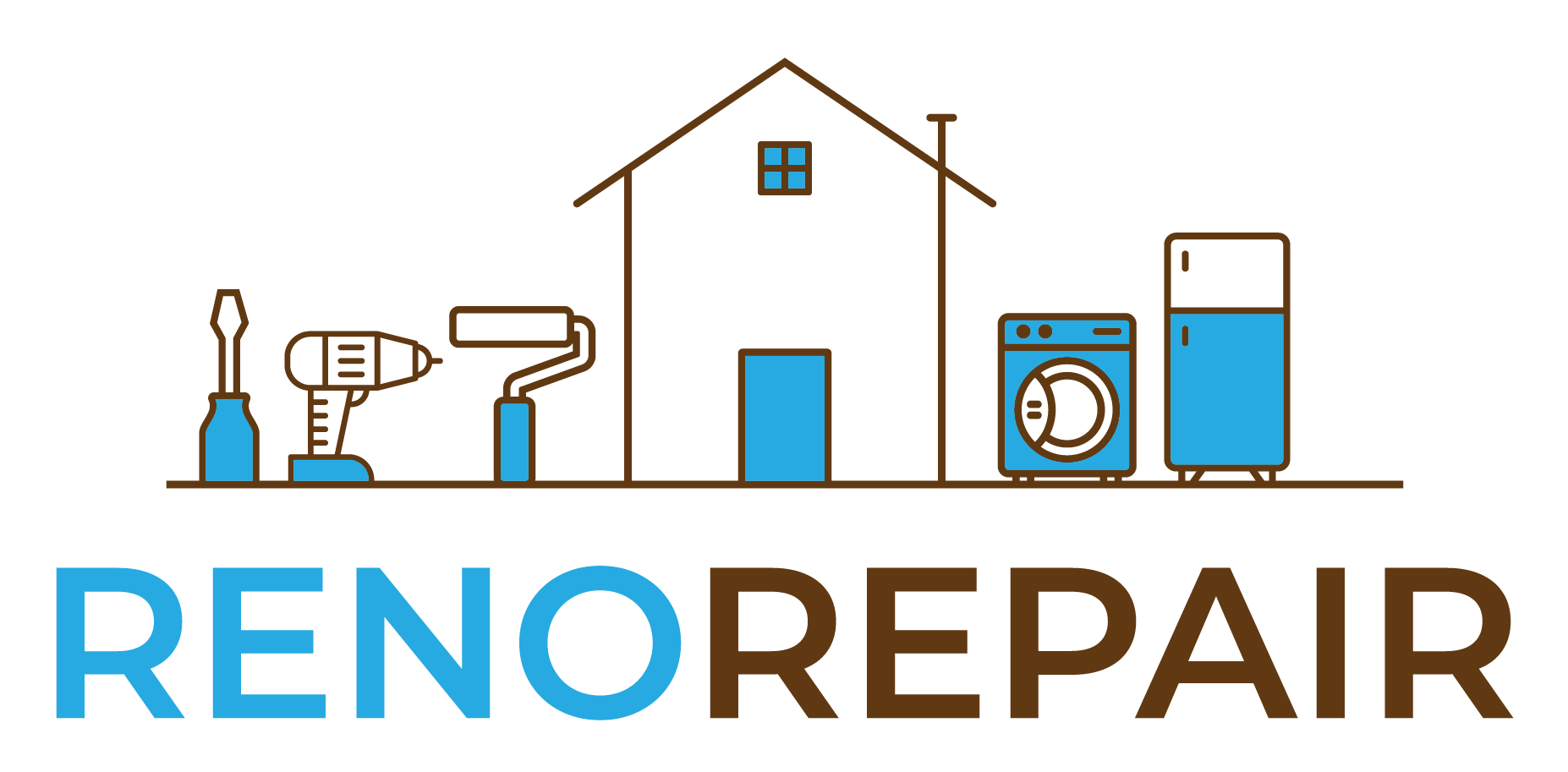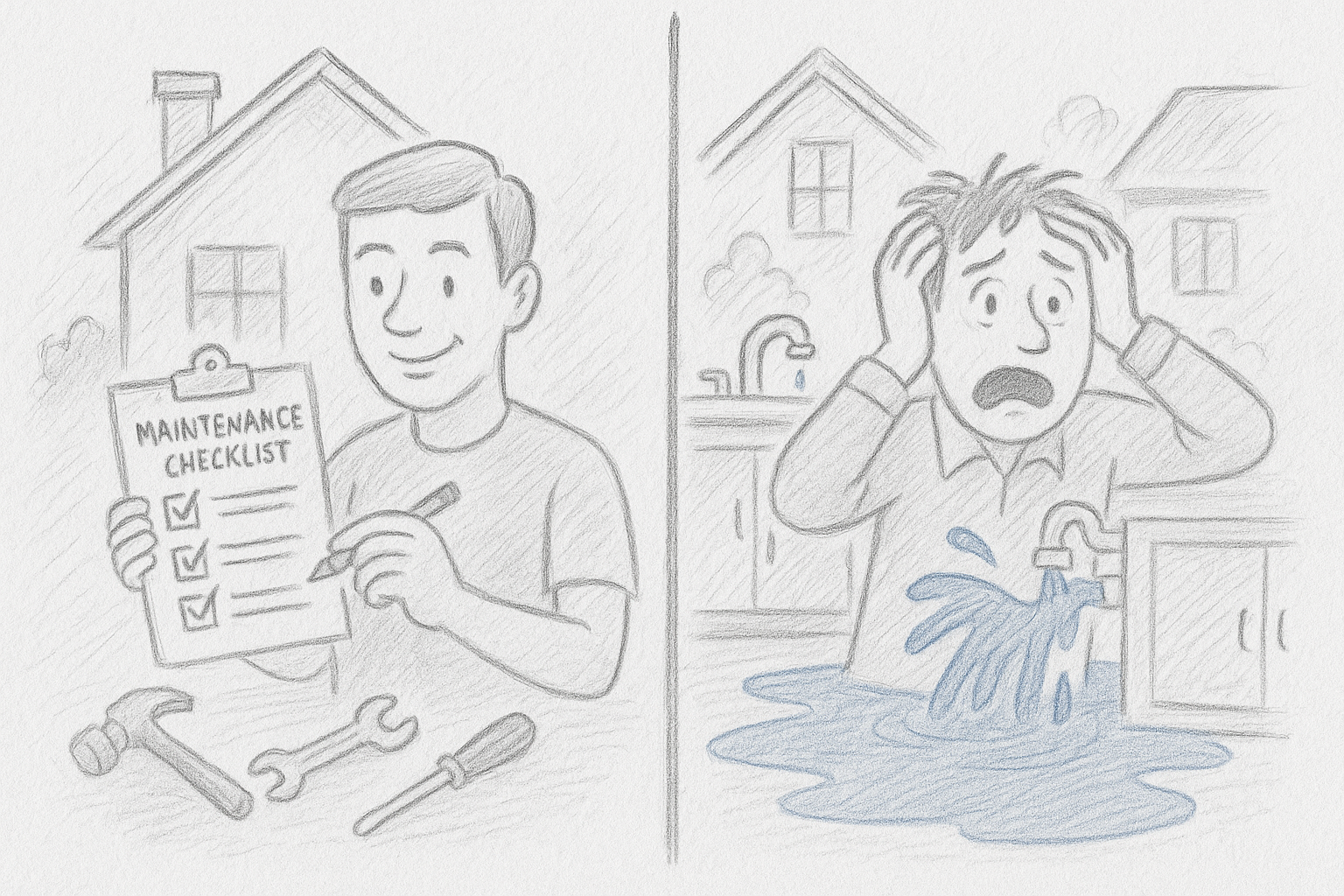Picture this: It’s 11 PM on a Friday night, and your basement is flooding from a burst pipe. You’re frantically calling plumbers, getting quoted $300 just for the emergency visit, plus time-and-materials that could hit $800 before they even start the real work.
Now imagine a different scenario: Last spring, you scheduled a routine plumbing inspection for $89, caught a small leak early, and had it fixed with a flat-rate repair for $149. Total cost: $238. Total stress: minimal.
This is the difference between emergency and planned repairs – and why savvy GTA homeowners are making the shift.
The True Cost of Emergency Repairs
Emergency repairs don’t just cost more money – they cost more everything. When your furnace dies in January or your roof starts leaking during a storm, you’re at the mercy of whoever answers the phone. Premium pricing becomes standard, and quality becomes secondary to availability.
Emergency repair costs typically include:
- Premium hourly rates (often 50-100% higher)
- Emergency service fees ($100-400)
- Rush charges for materials
- Limited time to research contractors
- Higher likelihood of temporary fixes that need follow-up
Most importantly, emergency repairs often reveal additional problems that could have been addressed preventively. That burst pipe might expose water damage, mold, or structural issues that turn a $500 repair into a $5,000+ restoration project.
The Planned Repair Advantage
Planned repairs flip the script entirely. When you’re proactive about home maintenance, you control the timeline, the budget, and the quality of work. You can research contractors, compare options, and make decisions without the pressure of immediate crisis.
Flat-rate services make planned repairs even smarter. Instead of wondering whether a simple repair will cost $200 or $600 depending on “how long it takes,” you know exactly what you’ll pay upfront. This transparency lets you budget effectively and tackle multiple small issues in one visit.
Common Emergencies That Planned Maintenance Prevents
Plumbing Disasters
A routine inspection can catch aging pipes, slow leaks, and failing fixtures before they become midnight catastrophes. Simple fixes like replacing corroded supply lines or clearing minor clogs prevent the majority of emergency plumbing calls.
HVAC Breakdowns
Most furnace and AC failures happen gradually. Annual maintenance catches failing components, dirty filters, and worn parts while they’re still manageable. A $149 flat-rate tune-up beats a $2,000 emergency replacement on the coldest day of the year.
Electrical Issues
Flickering lights, warm outlets, and aging panels don’t fix themselves. Planned electrical inspections identify fire hazards and code violations before they become dangerous – or expensive.
Roof Problems
Small leaks stay small when caught early. During routine maintenance, contractors can replace a few damaged shingles for under $200. Wait until water is dripping into your living room, and you’re looking at emergency tarping, water damage repair, and premium pricing for everything.
Why Flat-Rate Services Work Better for Planned Repairs
Traditional contractors quote time-and-materials because they don’t know what they’ll find. But planned repairs deal with known issues and routine maintenance – perfect for flat-rate pricing.
When you’re planning ahead, flat-rate services offer:
- Budget certainty: Know exactly what you’ll pay before work begins
- No surprise charges: No “this took longer than expected” bills
- Bundling opportunities: Fix multiple small issues efficiently
- Quality focus: Contractors focus on results, not billable hours
Flat-rate pricing works less well for emergency repairs because true emergencies often involve unknown variables. When your basement is flooding, the contractor needs to assess damage, trace problems, and adapt solutions in real-time.
Building Your Planned Maintenance Strategy
Smart homeowners create maintenance schedules that prevent most emergencies:
Spring: Roof inspection, exterior cleaning, HVAC tune-up
Summer: Electrical check, plumbing inspection, exterior repairs
Fall: Heating system service, weather sealing, gutter maintenance
Winter: Interior projects, planning for spring work
With flat-rate services, you can budget these items annually and tackle them systematically. Many GTA homeowners spend $800-1,200 per year on planned maintenance – often less than a single emergency repair would cost.
The Bottom Line
Emergency repairs will always be part of homeownership, but they don’t have to dominate your repair budget or stress levels. By shifting focus to planned maintenance with transparent, flat-rate pricing, you stay ahead of problems instead of chasing them.
Your home works hard for you – return the favor with proactive care. Your future self (and your wallet) will thank you.
Ready to shift from emergency to planned repairs? Join our waitlist to be notified when flat-rate maintenance services launch in the GTA.

